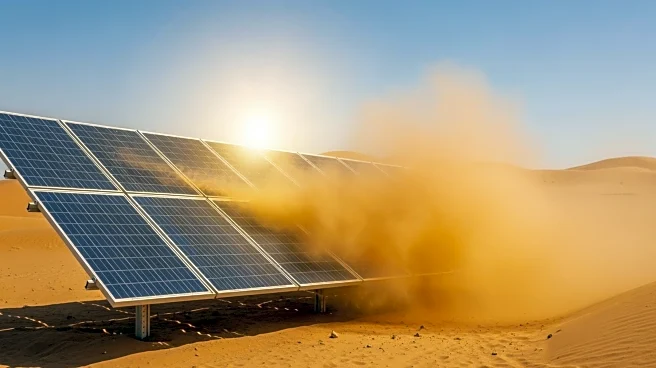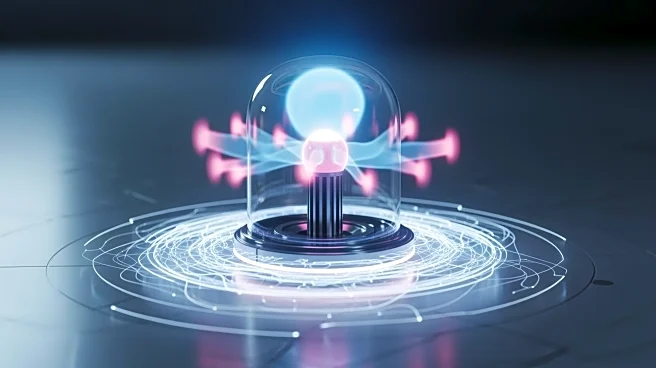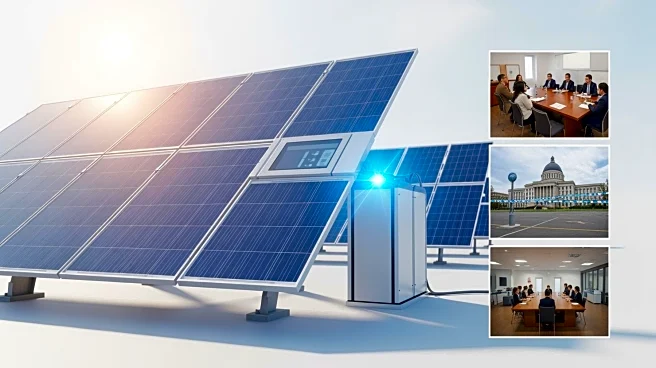What's Happening?
Egyptian researchers at the German University in Cairo have developed innovative self-cleaning solar panels designed to maintain efficiency by preventing dust accumulation. These panels utilize a vibration
mechanism inspired by natural processes, such as how tree leaves shed dust. The system vibrates twice daily to remove dust, significantly reducing the need for manual cleaning. Initial installations in Cairo have shown promising results, with panels maintaining higher efficiency compared to traditional ones. The technology aims to address the challenge of dust buildup, which can severely impact solar panel performance in arid regions.
Why It's Important?
This development is significant for the solar energy sector, particularly in desert regions where dust accumulation is a major issue. By reducing the need for frequent manual cleaning, the technology can lower maintenance costs and improve the sustainability of solar energy systems. This innovation could lead to broader adoption of solar power in regions previously hindered by environmental challenges. The economic implications are substantial, as reduced cleaning costs can make solar energy more competitive and accessible, potentially accelerating the transition to renewable energy sources.
What's Next?
The company behind the technology plans to expand production to meet growing demand, with installations already underway in other residential areas in Egypt. As the technology proves its effectiveness, it may attract interest from international markets facing similar environmental challenges. Further research and development could enhance the system's efficiency and adaptability to different climatic conditions, potentially leading to widespread adoption in the global solar industry.
Beyond the Headlines
The innovation raises questions about the long-term durability of solar panels subjected to continuous vibration. While the developers assure that the system is calibrated to prevent damage, ongoing monitoring and testing will be crucial. Additionally, the economic feasibility compared to traditional cleaning methods will be a key factor in its adoption. The technology also highlights the potential for biomimicry in engineering solutions, drawing inspiration from natural processes to solve human challenges.











